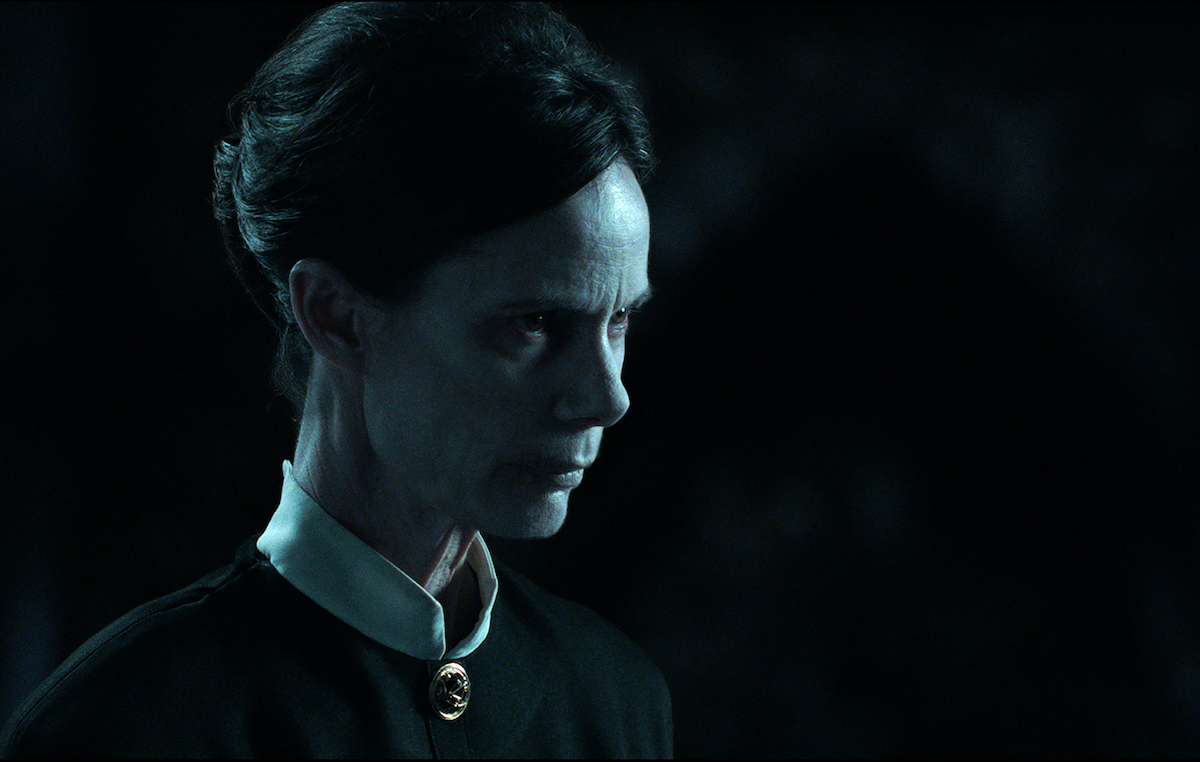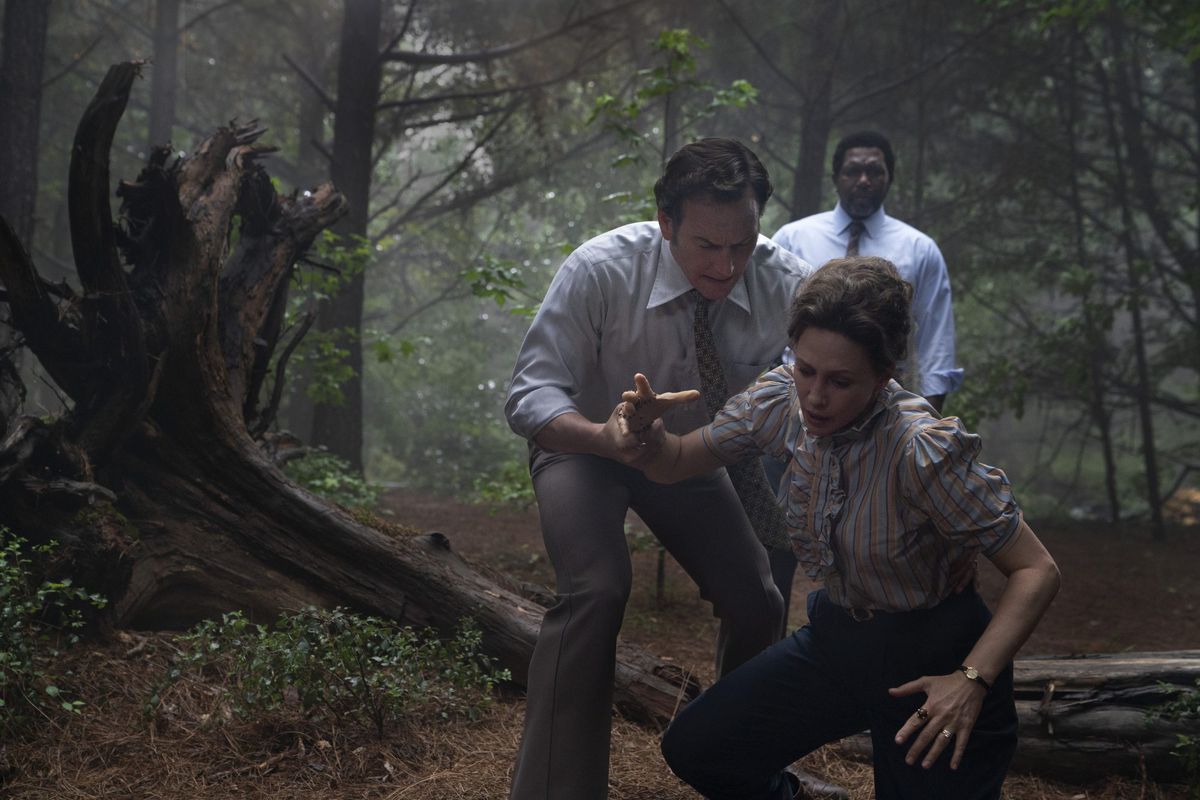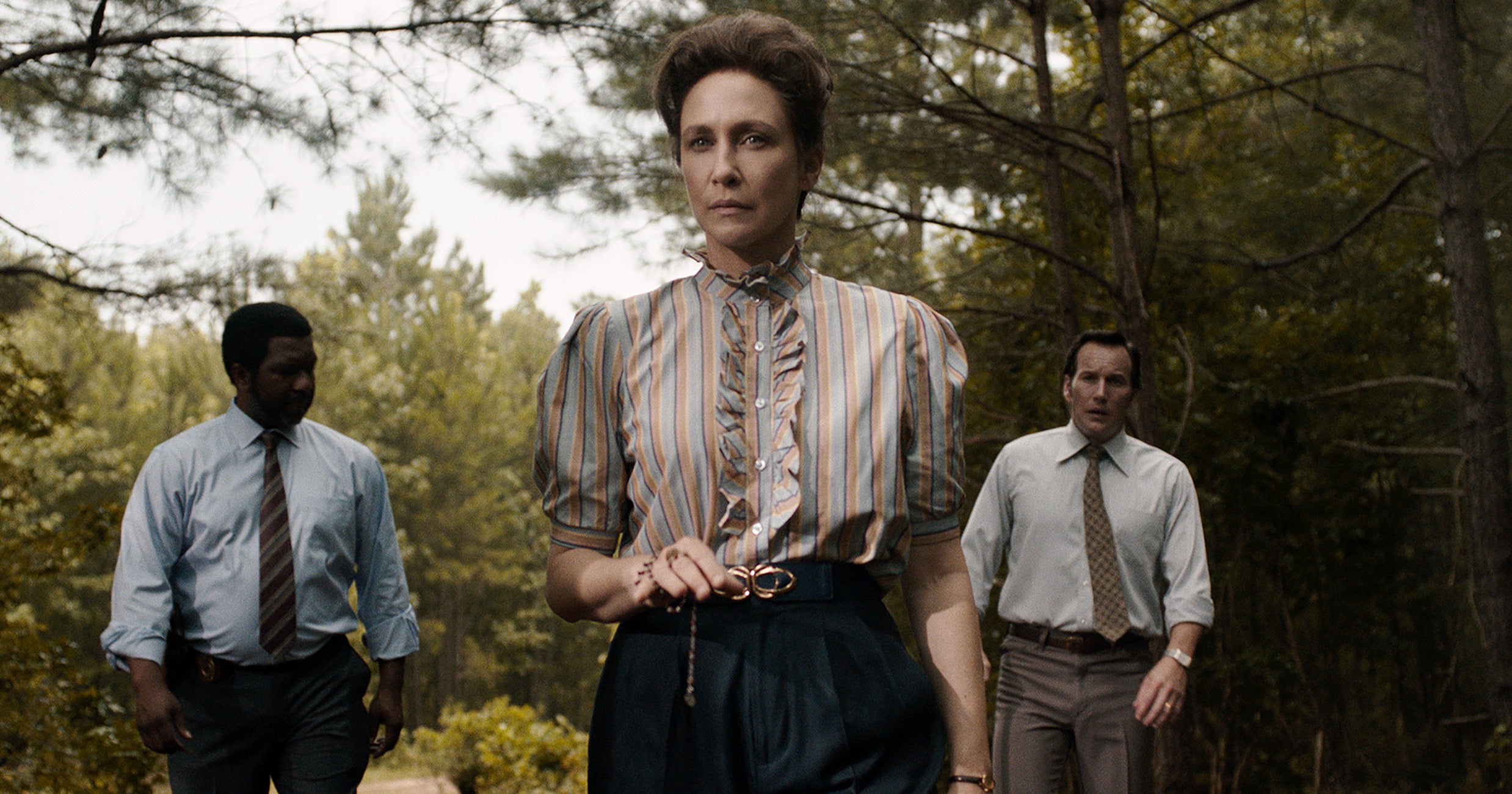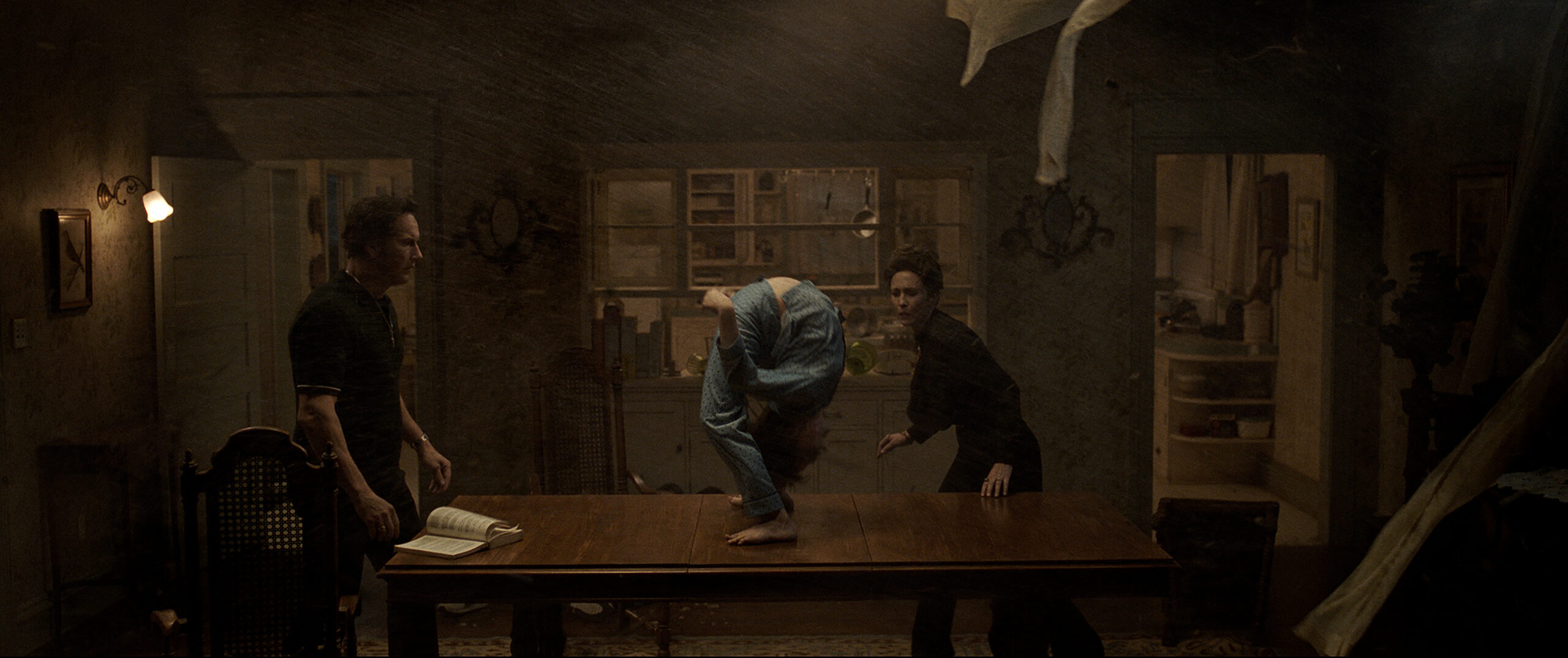Table of Contents Show
James Wan is notoriously known for his work on horror films, most notably for his directional work on the films from The Conjuring Universe. What started as a movie being ‘based on a true story’ led to a series of spin-offs and sequels that featured real-life totems and demonic incidents that demonologist Ed and Lorraine Warren claim they encountered throughout their careers. The third installment to continue shedding light on the Warrens and their adventures would be The Conjuring 3: The Devil Made Me Do It (2021; Michael Chaves) and would no longer be directed by Wan and instead by Michael Chaves. With a new director in place came new themes and storytelling that ultimately felt like a step backward for the series.
An Over-exaggerated Twist On Reality
The Conjuring 3 is meant to highlight Ed and Lorraine Warren’s involvement with Arne Johnson, who would be the first suspect accused of murder to claim demonic possession as his defense after aiding a 12-year-old possessed David Glatzel by asking the demon to take him instead. The situation in itself is intriguing on its own and would surely draw in an audience. The film, however, served to be an attempt at a hybrid film about crime, love, and horror.
The Bad: The Over Fictionalization In ‘The Conjuring 3: The Devil Made Me Do It’ (2021)
The trope of “based on a true story” or “based on real-life events” is nothing out of the ordinary for films within this universe. The movies always hold a title sequence that reference the events as the “most evil” or “most diabolical” encounters, following the sentence that the films are based on actual events. For The Conjuring 3, the choice of wording was “most sinister,” which failed to deliver considering the movie drew more from fictional events that were only constructed for the sake of the film. There is nothing wrong with utilizing fictional characters to inflict horror onto your audience.

James Wan, the original creator of the film successfully used the mythological demon Valak as his inspiration for The Nun in The Conjuring 2. The film also featured The Crooked Man, who was also created for the film, and a reference to a British nursery rhyme which fit well considering the film was set in London. Along with the relevancy, the characters inflicted horror based on their appearances and their involvements within the plot by inflicting fear onto the Warrens and the families they haunted.
The unfortunate overreliance of fictional elements hurts the film because Lorraine Warren and Arne Johnson were the only people involved in the real-life events during production. It was because of this; the film heavily relied on creating fictionalized scenarios and characters since David Glatzel, along with the rest of his family, had no involvement with the film. Carl Glatzel, the younger brother of David, claims his family was exploited and traumatized by the Warrens for their involvement in David’s supposed possession. Several priests who examined David determined he was haunted by more than one evil entity despite Carl’s claim. However, the plot of the film strays away as far as possible from David and the Glatzel’s as they are only featured for the beginning parts of the film.
These unfortunate circumstances were not present for the first film, which is another reason the third iteration lacked authenticity. The Conjuring (2013) focused on the Perron family as they moved into a new home in Harrisville, Utah in 1970. What was meant to be home sweet home quickly became a terrorizing move, as the Perrons experienced abnormal amounts of paranormal activity? The film does a great job of using their real-life experiences and intensifying them on screen. This helped provide authenticity as members of the family willingly shared their experiences. However, in The Conjuring 3, the main villain of this film was revealed to be an occultist who was the daughter of a priest Ed and Lorraine reached out to in order to help exorcize Arne Johnson.
Through this occultist, the movie heavily relies on her to carry out villainous actions towards Ed and Lorraine by attacking their love as she possesses Ed in hopes of having him murder Lorraine. Along with targeting them, she also targets Arne, who the Warrens are trying to save from sacrificing himself due to her plan to sacrifice three human spirits. With the plot heavily relying on these fictionalized scenarios, the film turns real-life characters into background characters. It fails to convince the audience that any of these events were “based on real-life.” This was a new avenue for The Conjuring films to go through as the first two films had more involvement from their real-life victims who were present to ensure accuracy in depicting the demons and horrors they faced.
The Good: Ed And Lorraine Warren
Despite The Conjuring 3 not delivering in the ways of the past two films, there were still some positive similarities and well-done scenarios. The return of Vera Farmiga and Patrick Wilson as Ed and Lorraine Warren served to be full of chemistry and believable romance between the two. Chaves maintained the spark Ed and Lorraine always had for each other in the series as they were willing to go to extreme lengths for each other.

One scene featured Ed experiencing heart problems and miraculously pushing himself into saving Lorraine from falling off a cliff while she was in the middle of using her psychic-like abilities to visualize the fate of the cursed teenager. The moment was dramatic and added intensity to the type of encounters the two will have throughout the film.
Chaves, in a way, made the film more about the romance and loved the Warrens have for each other, with the backdrop being the horror they faced while handling the case of Arnie Johnson. Despite being positive, it did strip the film from being as scary and intense as the other films. Chaves made the power of love strong enough for Ed and Lorraine to overcome their occultist antagonist.
The End Of The Conjuring?
Michael Chaves may not be the only reason for the film lacking authenticity compared to the rest of the movies in the series, but his involvement alone was underwhelming. The last film Chaves directed, ‘The Curse of La Llorona’ stripped the authenticity and original culture’s connection to the myth. Instead, it used Linda Cardellini as a social worker to be haunted by The Weeping Woman after stripping a single mother of her own two children.

With this in mind, it was surprising Wan passed the torch to Chaves. While the film still did relatively well at the box office, the story was not as engaging or fear-striking. Whether or not we see the green light for another film in The Conjuring universe, it’d be best it’s led by James Wan and include more involvement with the people who experienced the events being retold.
